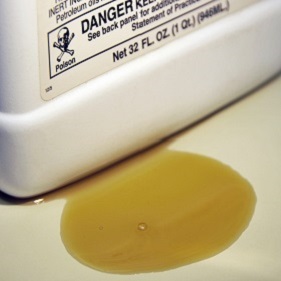EPA Defends Decision Not to Mandate Disclosure of Inert Ingredients in Pesticides

EPA recently defended its decision not to mandate the disclosure of pesticide inert ingredients that are known to be toxic or hazardous to human health in a pleading filed in a closely-watched case in federal district court in California. This lawsuit was initiated last year by several environmental groups seeking to require EPA to promulgate a rule mandating the disclosure of hazardous inert ingredients on pesticide labels.
Pesticides sold to the public typically do not contain the pure form of the “active” pesticide ingredient, but rather are formulated with other so-called “inert” ingredients (surfactants, adjuvants, solvents, stabilizers, fillers, etc.) to produce the finished product. Inert ingredients in pesticide products often comprise 50% to more than 95% of the formulation. Some 371 inert ingredients used in pesticide formulations have been designated as toxic or hazardous under U.S. law. However, the presence of these hazardous ingredients in the pesticide generally is not disclosed to users or the public.
The pending lawsuit follows a similar action filed six years ago to compel EPA to respond to a petition asking EPA to initiate a process that would require the disclosure of inert ingredients in pesticides. In response, EPA issued an Advanced Notice of Proposed Rulemaking in which it asked the public to comment on two alternative proposals. The first proposal would require the listing of “potentially hazardous” inert ingredients; the second would require the listing of most or all inert ingredients. At the time, EPA stated that “the public should have a means to learn the identities of hazardous inert ingredients in pesticide formulations” and that the Agency “believes that increased transparency could lead to better informed pesticide use.”
Nevertheless, EPA never went forward with a rulemaking to require the disclosure of pesticide inert ingredients. In May 2014, EPA formally denied the petition for a rulemaking, which prompted the present lawsuit.
EPA has defended this decision in the current lawsuit by arguing that it acted reasonably and within the scope of its authority under the Federal Insecticide, Fungicide and Rodenticide Act (FIFRA) in deciding not to expend the “time and resource commitments that rulemaking would require.” EPA asserted that the public comments it received in response to its 2009 proposals were not “sufficient to support proceeding with the complex rulemaking.” In particular, EPA asserted that available data indicate that inert ingredient disclosure “would not influence consumers purchasing products containing potentially hazardous ingredients or otherwise reduce risks to human health or the environment.” EPA emphasized that the Agency evaluates the safety of each proposed pesticide product as a whole, of which inert ingredients comprise only a part, and that it registers only those products that meet FIFRA’s safety standards. EPA also pointed out that there is nothing in FIFRA that requires the identity of inert ingredients to be listed on the pesticide label. To the contrary, most pesticide companies claim the identity of the inert ingredients in their pesticide formulation as confidential, and FIFRA generally prohibits EPA from disclosing a company’s confidential commercial information. Thus, any change that would require identification of inert ingredients in pesticides also would have to address pesticide producers’ confidentiality concerns.
The court’s decision in this case is expected later this year.
